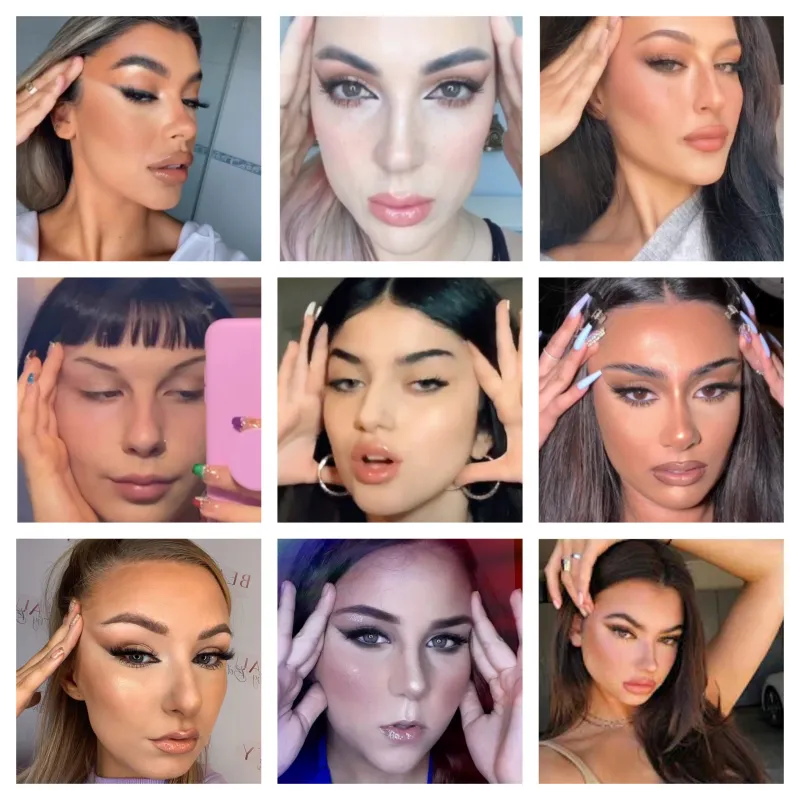The fox-eye stalks me these days. The algorithmic TikTok, Youtube and Instagram do fine jobs in pushing make-up tutorials with Caucasian models pulling their eyes back to make them appear slanted. I am more than just annoyed.
The eye-pulls trigger flashbacks to my experiences in elementary school when my peers would make so-called “exotic Ching Chong eyes,” pulling the outside corners of their eyes to mimic the size and shape of Asian eyes. So committed were my peers that they even developed a whole ethnic subgroup taxonomy of eye-pulls: eyes pulled upward for Japanese, to the side for Chinese and downwards for Korean.
The fox-eye trend, where one applies make-up, pulls on their face or undergoes plastic surgery so the eyes and brows appear to slant upwards, is unapologetic cultural appropriation. Caucasian women like actress Megan Fox and supermodel Bella Hadid are often credited for popularizing the trend. These paragons of Western beauty standards require special efforts to achieve this look. On them, this “manufactured” eye shape is beautiful. On Asians however, this inborn eye shape is a feature to make fun of. Whether the look is achieved with make-up, eye-pulls or plastic surgery, the effect is the same: It’s still an age-old taunt.
One time, I spoke up and told my classmates that the gesture was racist, only to be shot down with “jeez it’s just a joke, you can’t even take a joke?” From then on, all I ever did in defense was laugh; I wanted to be a “cool person” who knew how to joke around. Every morning, I would use my hands to push the corners of my eyes closer together, hoping that one day they would become round. Every time I took a photo, I would scrutinize how my eyes appeared wider than everyone else’s. My Asian-American identity was reduced to a single facial feature.
Recently, digital content creator Emma Chamberlain posted a photo to Instagram where she used her hands to pull back and slant her eyes and stuck out her tongue in a gesture of sassy indifference. Chamberlain sat on the post for around two days amid a firestorm of criticism, especially from the Asian community. Yet, fans of other backgrounds defended her, arguing that the gesture belonged to a harmless make-up trend with no ill intent. According to them, members of the Asian community were “overreacting” and “overly-sensitive.”
Just like how I was apparently “overreacting” when I “couldn’t take a joke” from my peers.
Chamberlain later issued an apology but failed to address the true issue of the fraught gesture, asserting simply: “sorry to those who were hurt by it.” Essentially, “sorry YOU got offended.” Such a non-apology veers toward those elementary school taunts of “why are you so sensitive?”
What Chamberlain and others who execute this gesture don’t understand, however, is that the gesture has racially-charged historical weight. Consider Henri Meyer’s French political cartoon, “China – The Cake of Kings… And of Emperors,” a satirical depiction of imperialism in the late 1890s. The cartoon portrays Chinese and Japanese world leaders with features mirroring those included in the fox-eye trend: winged, elongated and slanted eyes with upwards-pushed brows. The caricature pokes fun at Asian features that were meant to make the Chinese look more barbaric and subhuman to justify imperialism and to make the Japanese appear distanced and isolated from the other European powers. Yet in the 21st century, these Asian features have suddenly transformed into beauty trends for non-Asian people.
Unfortunately, the long-standing style of bullying people with these features has even led individuals to seek permanent changes. In 2013, American television personality Julie Chen revealed that she had received plastic surgery to make her natural Asian eyes appear bigger and therefore more relatable to her audience. Before then, according to directors and agents, her eyes made her seem inattentive and spiritless. And Chen is not the only one to get eye surgery. The Asian blepharoplasty, a surgical eye procedure popularized in the mid 20th century to make Asians appear more kind and trustworthy to westernized society, is the third most requested cosmetic operation among Asian Americans and the most performed aesthetic procedure in Asia.
Equipped with the understanding of this topic, at some point, I stopped trying to blend in and joke along. There’s no humor in watching people like Julia Chen being forced to change their looks in order to achieve career success or in seeing children grow up with trauma and insecurities about their appearance. Piece by piece, I went through a journey of self-acceptance, and today, I am proud of my Asian roots and the very look that makes me unique.
Skin color, eye shape and physical features make people not merely “sensitive,” but vulnerable. All the specific oppressions people of color have endured in history render jokes about their bodies permanently unfunny.
Pulling your eyes back for a trend is no exception.
Contact Sophie Wang at sophie.my.wang ‘at’ gmail.com.
